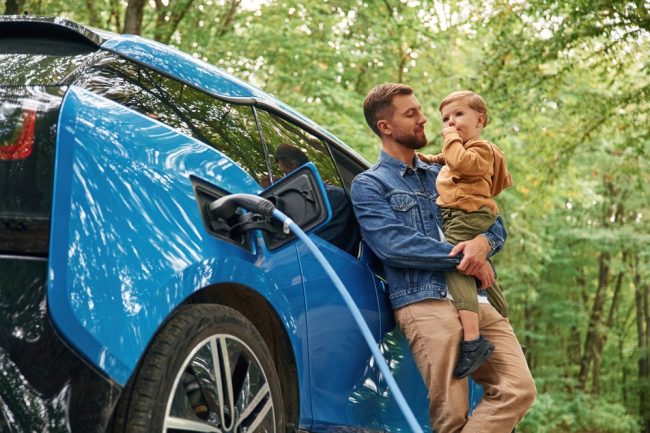
Electric vehicles (EVs) are the future. We hear about the environmental benefits, the thrilling acceleration, and the gas savings. It all sounds like a perfect, futuristic dream. Many people are rushing to trade in their gas cars for a cleaner, quieter ride.
However, a growing number of new owners are discovering some hard truths. Specifically, there are significant downsides that dealers and enthusiasts rarely mention. These hidden electric car issues can turn your dream car into a financial burden. For this reason, before you buy, you need to know what you’re really signing up for.
1. The Shocking Cost of Battery Replacement
This is the biggest issue by far. An EV’s battery is like a gas car’s engine. It’s the most crucial and expensive component. Ultimately, all batteries degrade over time. After 8-10 years, you will likely see a significant drop in your car’s range.
Replacing an out-of-warranty EV battery is not a simple fix. In fact, it can cost anywhere from $5,000 to over $20,000. This cost can be more than the car is worth at that point. It’s a massive financial time bomb that many new owners do not prepare for.
2. Real-World Range Is Not What’s Advertised
That 300-mile range on the sticker looks great. Unfortunately, you will rarely achieve it. Cold weather is a primary battery killer. For example, using your car’s heater in the winter can slash your range by up to 40%. You will find yourself watching the range meter plummet on a cold day.
Towing a small trailer or boat is another major drain. Even driving at high speeds on the highway will reduce your range faster than the estimate. This “range anxiety” is a constant stressor for many owners.
3. The Home Charger Installation Nightmare
You can technically charge an EV from a standard wall outlet (Level 1). But this can take days, not hours, to get a full charge. Therefore, to make an EV practical, you need a Level 2 charger installed in your home. This is an often-overlooked expense.
This installation can cost between $500 and $2,000. If your home has an older electrical panel, you may need a major, expensive upgrade. This is a significant upfront cost that is not included in the car’s price tag.
4. Public Charging Is Often a Mess
The public charging network is not as reliable as the gas station network. For example, you might pull up to a station only to find the chargers are broken. Or, all the chargers are in use, leading to long, frustrating waits.
Furthermore, there are multiple charging networks. Each one often requires its own app and account. In other words, it’s not as simple as just swiping a credit card. This adds a layer of hassle to every long-distance trip.
5. EVs Are Extremely Heavy (and It Costs You)
The massive battery packs make electric cars incredibly heavy. A simple EV sedan can weigh as much as a gas-powered SUV. This weight has a very specific consequence: EVs destroy their tires. Consequently, many owners are shocked to find they need a new, expensive set of tires after just 15,000 to 20,000 miles.
6. Your Insurance Premiums Will Likely Go Up
Insurance companies are not blind to these hidden electric car issues. They know that EVs are more expensive to repair. Even a minor fender-bender can damage the complex battery or sensors. As a result, this leads to higher repair bills, which insurance companies pass on to you through higher premiums.
7. “Ghost” Battery Drain Is Real
You may park your car with an 80% charge. When you return a few days later, you might find it at 75% or less. People call this ‘ghost drain’ or ‘vampire drain.’ The car’s complex computer systems are always running. This process slowly sips power from the battery, even when the car is off.
8. Repairs Can Be a Dealer-Only Monopoly
You can’t take your EV to your trusted local mechanic. The technology is proprietary and complex. Repairs often require specialized diagnostic tools and training. This means you are locked into going to the dealer for almost every issue.
As a result, repair costs are higher. You lose the ability to shop around for a better price. This lack of competition is a significant long-term cost.
9. Uncertain Resale Value
Technology is moving at a breakneck pace. A new EV with a 500-mile range and faster charging could come out next year. What does that do to the value of your 3-year-old EV with a 250-mile range? The resale market is volatile. Your expensive new car could depreciate much faster than you expect.
10. The Silent Ride Isn’t Always a Good Thing
People often list the quiet ride as a major perk. However, it has a dark side. Pedestrians and cyclists are used to hearing cars approach. The silence of an EV makes it harder for them to notice you. This requires the driver to be far more vigilant, as people may step out in front of you without looking.
Go in With Your Eyes Open
Electric cars are a remarkable technology. They can be a great choice for many people. But they are not a perfect solution. They come with their own unique set of trade-offs and significant costs.
It is crucial to look past the marketing. You must consider the total cost of ownership, not just the sticker price and gas savings. These hidden electric car issues are manageable, but only if you know about them “before” you buy.
Do you own an EV? What is one unexpected issue or cost you’ve faced? Let us know in the comments.
What to Read Next…
- 7 Deceptive Tricks Rental Car Companies Use to Scam You
- Theft Without a Trace: 8 Scams That Left Families Broke
- AI-Powered Scams Are Here: 5 New Threats That Look Too Real to Question
- Why Do Some Men Treat Cars Better Than Relationships?
- 10 Relationship Habits That Slowly Break Trust

Latrice is a dedicated professional with a rich background in social work, complemented by an Associate Degree in the field. Her journey has been uniquely shaped by the rewarding experience of being a stay-at-home mom to her two children, aged 13 and 5. This role has not only been a testament to her commitment to family but has also provided her with invaluable life lessons and insights.
As a mother, Latrice has embraced the opportunity to educate her children on essential life skills, with a special focus on financial literacy, the nuances of life, and the importance of inner peace.







